
Discover The Top Cities To Visit In South America | Travel Blog
Deciding where to visit in South America ?. There are so many amazing places waiting for you. Our region is packed with charm, history, and adventure at every turn.
After looking into everything from famous landmarks to hidden gems, we put together a list of the best cities to explore in South America.
Table of content
- Beautiful Cities full of charm, culture and close to nature
- Rio de Janeiro, Brazil
- Buenos Aires, Argentina
- Cusco, Peru
- Santiago, Chile
- Lima, Peru
- Cartagena, Colombia
- Quito, Ecuador
- Medellín, Colombia
- Montevideo, Uruguay
- La Paz, Bolivia
- Iguazú Falls, Argentina/Brazil Border
- Ushuaia, Argentina
- São Paulo, Brazil
- Bogota, Colombia
- FAQs
- What are the best cities to visit in South America?
- Which city in South America is best for New Year’s Eve?
- What are some major cities worth visiting across South America?
- Where can I find natural wonders near top cities?
- What is the southernmost capital city in South America?
- Are there safe cities to explore while traveling through South America?
Beautiful Cities full of charm, culture and close to nature
- South America offers diverse cities like Rio de Janeiro, Buenos Aires, Cusco, and Quito, each with unique landmarks, culture, and history.
- Iconic highlights include Christ the Redeemer in Rio, Machu Picchu near Cusco, and vibrant Tango shows in Buenos Aires.
- Cities like Cartagena and Medellín stand out for their colorful streets and cultural transformation stories.
- Natural wonders such as Iguazú Falls on the Argentina-Brazil border or Ushuaia’s access to Antarctica provide unmatched experiences.
- Food lovers can explore Lima's renowned culinary scene with ceviche or São Paulo's mix of street eats and gourmet dining.
Rio de Janeiro, Brazil
Rio de Janeiro bursts with energy, color, and life. From its golden beaches to towering Corcovado Mountain, every corner feels alive with rhythm and charm.
Iconic landmarks such as Christ the Redeemer
I stood in awe beneath Christ the Redeemer, towering at 98 feet atop Corcovado Mountain. Built nearly 100 years ago, this statue symbolizes peace and faith. The views from up there are breathtaking, with Rio de Janeiro spread out like a living canvas below.
The landmark isn’t just about its size—though it’s massive—it’s also an engineering marvel of soapstone and reinforced concrete. Up close, every detail feels alive under the Brazilian sun.
Visiting early lets me avoid crowds while catching some of the best light for photos against that vibrant blue sky.
Vibrant culture and festivals like Carnival
Carnival in Rio is an explosion of life and color. Bright costumes, upbeat samba music, and dancing fill the streets. It happens every year before Lent, drawing millions from around the globe.
Samba schools compete fiercely with dazzling floats and performances. Each one showcases Brazil's culture through stunning art and rhythm.
I love how the energy never fades during the festival days. People laugh, sing, and celebrate together nonstop. The sounds of drums echo everywhere you go; it’s impossible to stay still! With vibrant parades at Sambadrome or spontaneous street parties, Carnival truly defines Rio's spirit—bold, lively, unforgettable.
Buenos Aires, Argentina
Buenos Aires is a city that pulses with life at every corner. From its grand theaters to buzzing streets, the energy here sweeps you off your feet.
Tango shows and cultural heritage
Tango shows here are electric. The passion in the dancers’ movements feels alive. I watched performers glide across the floor on Corrientes Avenue, a spot bursting with energy. Each step told stories of love and longing.
Plaza de Mayo adds depth to this cultural narrative. Its historic charm ties the past to today’s vibrant life. After a night of tango, I indulged in Asado barbecue—smoky, tender perfection that defines Argentine cuisine.
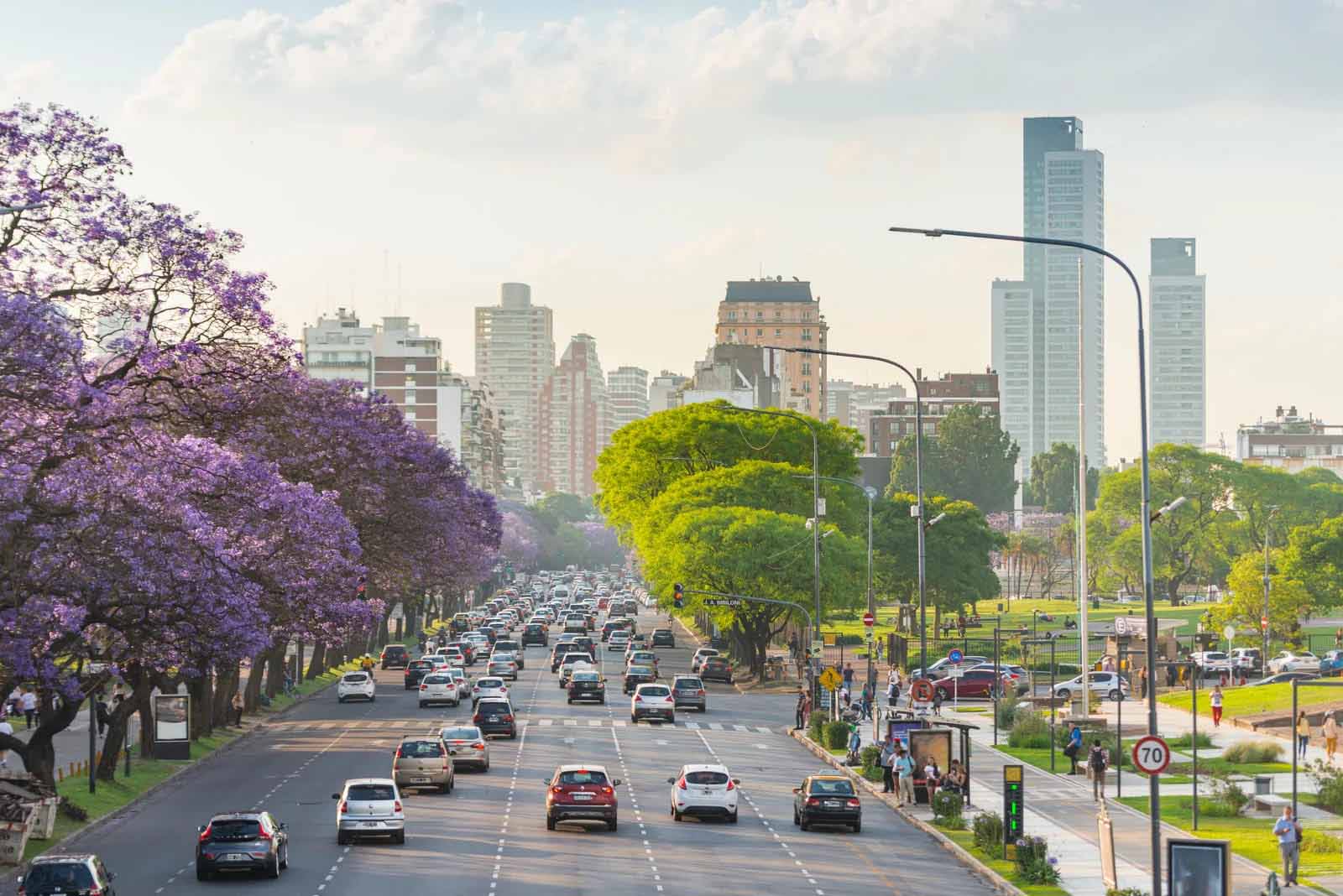
Stunning architecture and vibrant nightlife
Recoleta in Buenos Aires left me breathless. The cemetery, a maze of ornate tombs and statues, felt like an open-air museum. I wandered its paths, marveling at the resting places of Argentina’s elites.
Nearby, El Ateneo Grand Splendid stole my heart. Housed in a former theater, this bookstore oozed charm with its grand balconies and painted ceiling. Wide boulevards lined with neoclassical buildings added elegance to every stroll.
As night fell, the city transformed. Palermo buzzed with life from bars spilling onto cobbled streets. Clubs pulsed with music until sunrise—each corner offered excitement. “A night here feels like magic,” someone told me once—and they were right! From tango rhythms to cocktails crafted by skilled bartenders, Buenos Aires truly knows how to light up the evening hours.
Cusco, Peru
Cusco feels like stepping back in time. The city's old stone streets, ancient Incan walls, and lively markets pull you into its fascinating past.
Gateway to Machu Picchu
I started my journey to Machu Picchu in Cusco, Peru. This city buzzes with Incan and colonial history. Walking through its streets felt like stepping back into ancient times. I explored the Sacred Valley of the Incas, full of ruins and vibrant markets.
The famous Inca Trail begins here too. This trek leads to one of the most stunning views on Earth: Machu Picchu, known as the "Lost City of the Incas." It's a UNESCO World Heritage Site and worth every step.
Ollantaytambo also amazed me with its well-preserved terraces and stone streets nearby.
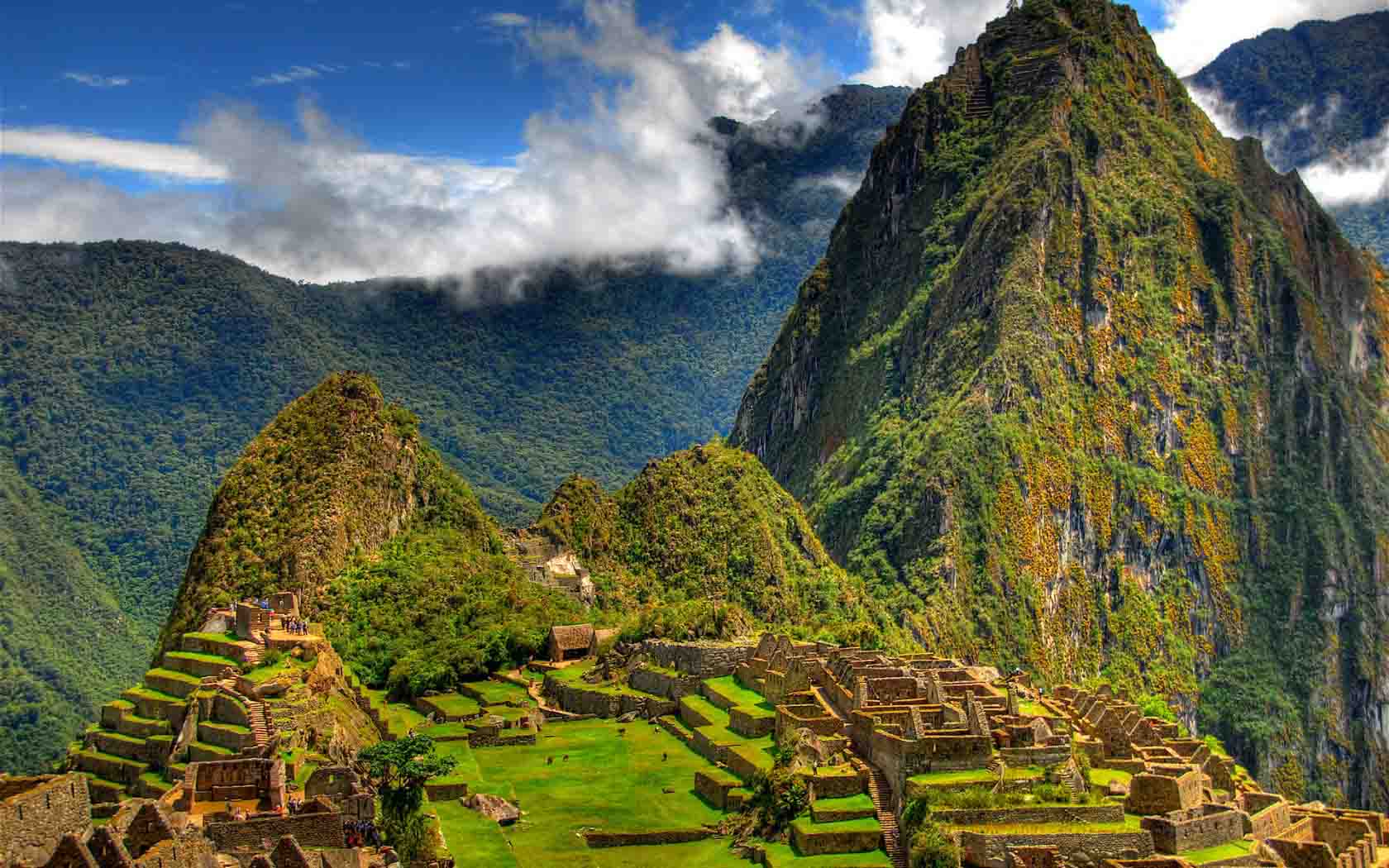
Rich Incan and colonial history
The streets of Cusco tell stories of the past. Once the thriving heart of the Inca Empire, this city still holds its ancient magic. I marveled at Sacsayhuamán, an impressive fortress built with massive stones that fit together perfectly without mortar.
The precision amazed me.
Colonial Spanish architecture adds another layer to Cusco's charm. At Qorikancha, a former Incan temple turned colonial church, history feels alive through its blended styles. Exploring the Sacred Valley brought more treasures like Pisac Market and Ollantaytambo ruins—each steeped in rich heritage that left me awe-struck.
Santiago, Chile
Santiago mixes old charm with modern energy. The Andes loom brightly, creating a stunning backdrop to explore and enjoy.
Blend of modernity and tradition
I walked through the bustling streets of Santiago, Chile, and saw a mix of old charm and sleek modernity. Neoclassical architecture stood shoulder to shoulder with glassy skyscrapers.
The Plaza de Armas, framed by historic buildings like the Metropolitan Cathedral, felt timeless. Yet just a short distance away, La Moneda Palace reflected both past elegance and present-day significance.
The Andes Mountains loomed in the background as I strolled through neighborhoods blending tradition with today’s trends. Bellavista buzzed with street art, trendy bars, and live music—while still holding on to its bohemian roots.
Markets like Mercado Central offered fresh seafood alongside centuries-old recipes for traditional dishes such as pastel de choclo. It was proof that even amidst progress, history refuses to fade away here.
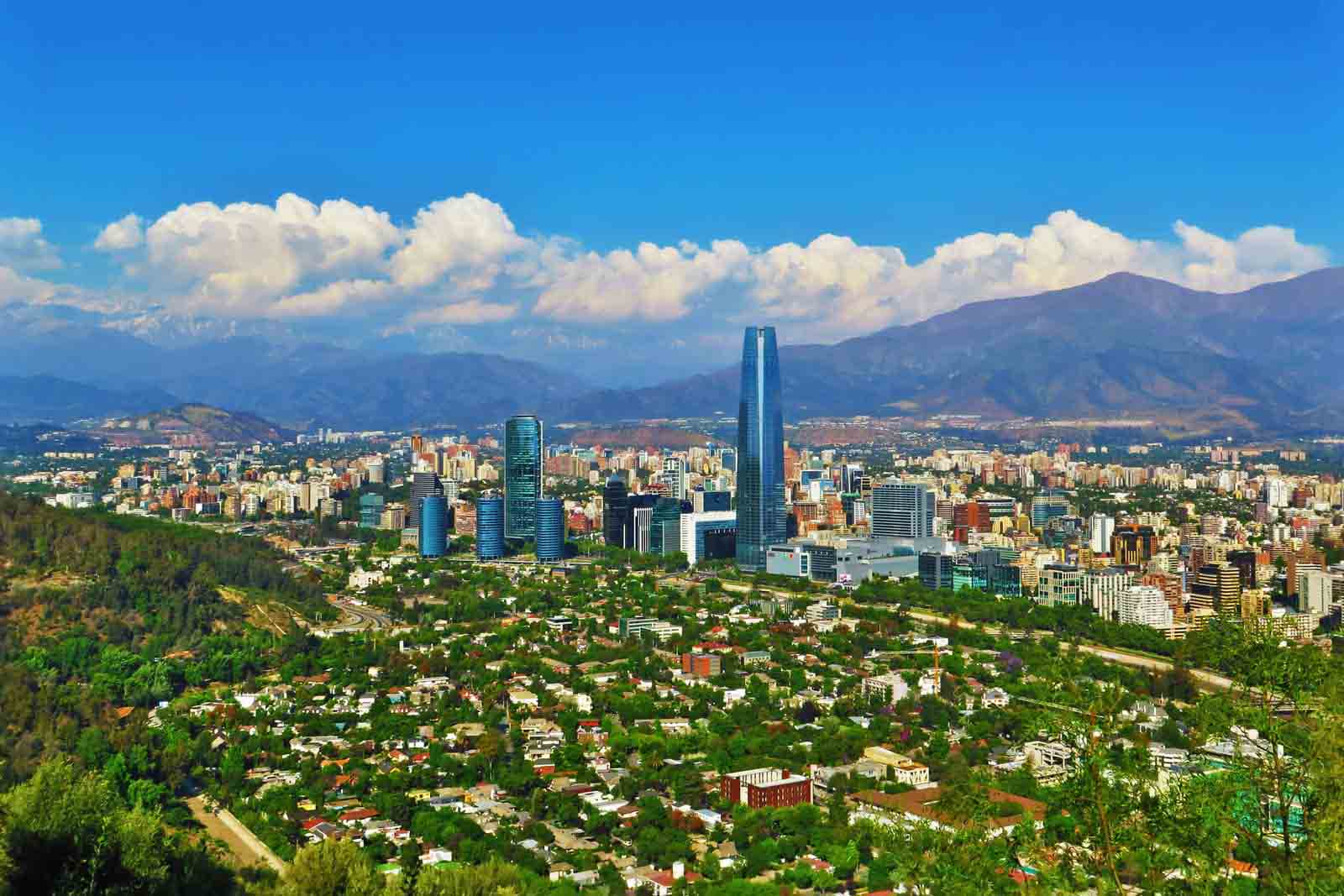
Stunning views of the Andes Mountains
The Andes Mountains stretch like a giant spine across South America. In Santiago, Chile, I see their snow-capped peaks on the horizon. They feel close enough to touch yet impossibly vast.
The view at sunrise is breathtaking—soft pinks and oranges lighting up the rugged ranges.
Nearby vineyards add to the charm. I visit a winery nestled in the foothills and enjoy rich local wines while staring at those towering giants. The contrast of lush green vines against sharp gray peaks creates a scene straight out of a postcard.
Lima, Peru
Lima is a paradise for food lovers, offering mouthwatering dishes like ceviche. This coastal city also brims with fascinating history and breathtaking ocean views.
Renowned culinary scene
Food in this city is unforgettable. I joined a ceviche-making class, and it blew my mind. Fresh fish, tangy lime, and chili created flavors that danced on my tongue. Locals paired it with Pisco sour, their national drink.
Its sweet yet sharp bite was perfect after the zesty dish.
Exploring restaurants felt like an adventure. Each served dishes bursting with creativity and bold tastes. Plates of lomo saltado offered tender meat stir-fried to perfection. Another standout was causa rellena—layers of creamy potato stuffed with vibrant fillings.
Every meal told a story rooted in passion and tradition here by the coast, where ocean breezes inspire every bite!
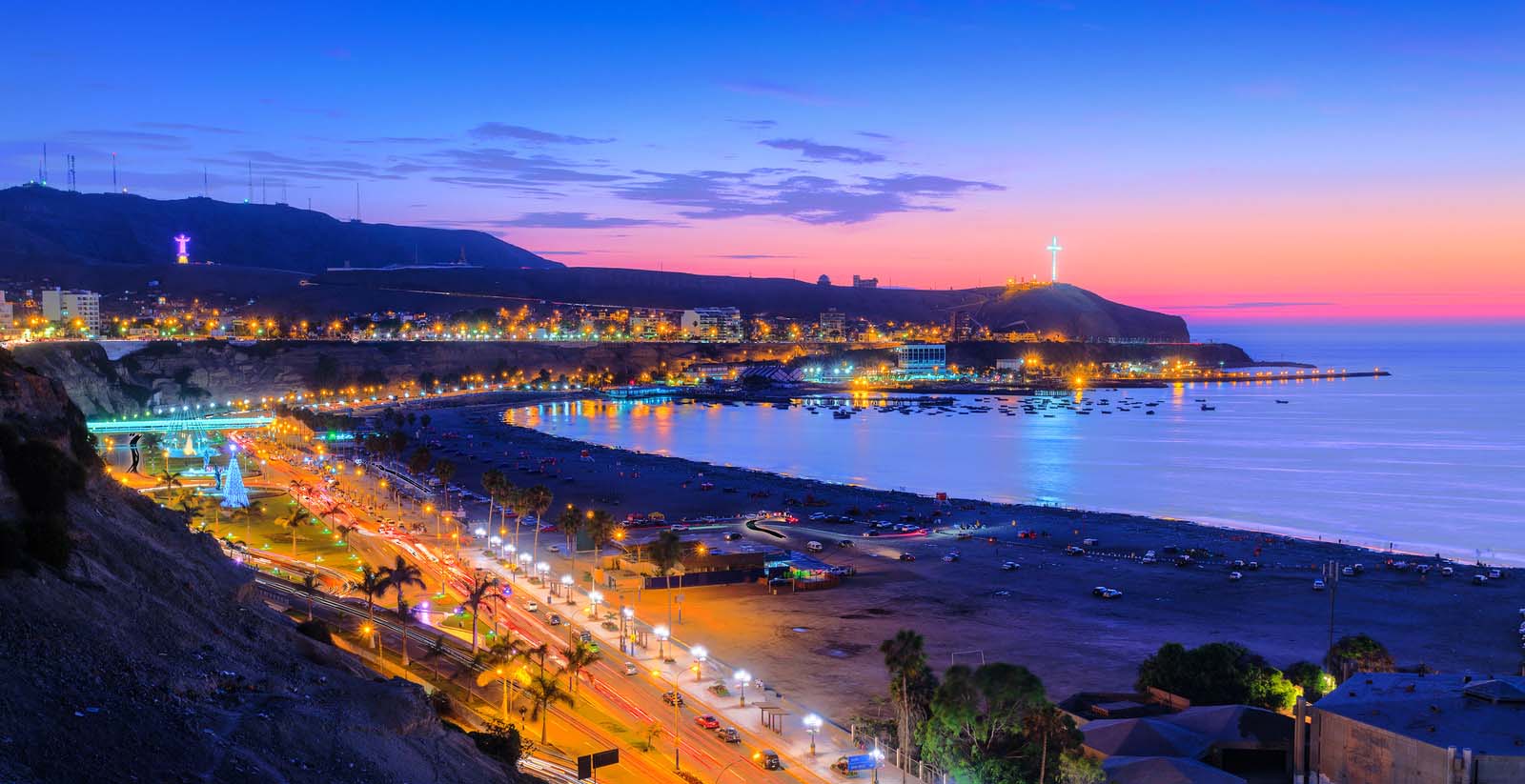
Historic sites and coastal charm
Lima blends history and ocean views like few cities can. I strolled along the Miraflores cliffs, where the Pacific stretched endlessly before me. The breeze carried a salt tang as I explored Parque del Amor, its colorful mosaics telling tales of passion.
Historic buildings stood proud in the city center, their colonial designs whispering secrets from centuries ago.
The ancient ruins of Huaca Pucllana fascinated me with their stories of a pre-Columbian past. Layers of history surrounded every step I took in this vibrant capital city of Peru. Coastal charm met rich tradition here, creating an experience both peaceful and captivating at once.
Cartagena, Colombia
Cartagena bursts with color and life, from its cobblestone streets to its lively plazas. The city feels like a storybook come alive, filled with charm at every turn.
Colorful colonial architecture
Bright buildings, painted in rich yellows, blues, and pinks, line the cobblestone streets. This 16th-century old town feels like stepping into a vibrant painting. The architecture reflects Spanish colonial styles with ornate balconies and red-tiled roofs.
It's no wonder this area earned a spot as a UNESCO World Heritage Site.
Each alley bursts with charm—wooden doors painted bold colors invite curiosity. I find every corner brimming with life; street vendors sell fruit while locals chat under vintage lanterns.
This isn’t just history—it’s alive and buzzing amidst vivid walls and timeless plazas.

Beautiful beaches and vibrant street life
Cartagena’s beaches are pure magic. The Rosario Islands, just a short boat ride away, feel like paradise. Crystal-clear water surrounds the soft white sand as you soak up the sun.
Playa Blanca is my go-to spot when I want to unwind or swim in calm waves. Vendors stroll by with fresh coconuts and fried snacks, making it easy to enjoy local flavors right on the shore.
The city itself buzzes with energy day and night. Street performers dance and sing while vendors fill plazas with handmade goods, fruit juices, and arepas. At dusk, lights glow around Café del Mar near the old fortress walls—it’s my favorite place for sunsets over the Caribbean Sea.
Life here spills onto every corner; there’s music in one square and laughter in another alleyway.
Quito, Ecuador
Quito is a treasure trove of culture and history, with streets that seem frozen in time. Its charm lies in the blend of old-world beauty and breathtaking mountain scenery.
Best-preserved historic center
The historic center feels like stepping into a time capsule. Cobblestone streets wind through stunning colonial buildings, many dating back centuries. It’s so well-preserved that UNESCO named it a World Heritage Site.
I explored grand churches and charming plazas that seemed frozen in time.
One highlight for me was the Museo Nacional del Banco Central. The artifacts told fascinating stories of Ecuador's history and culture. Bright colors filled every corner, from ornate facades to vibrant street art nearby.
Every alley carried whispers of the past mixed with today’s bustling energy.
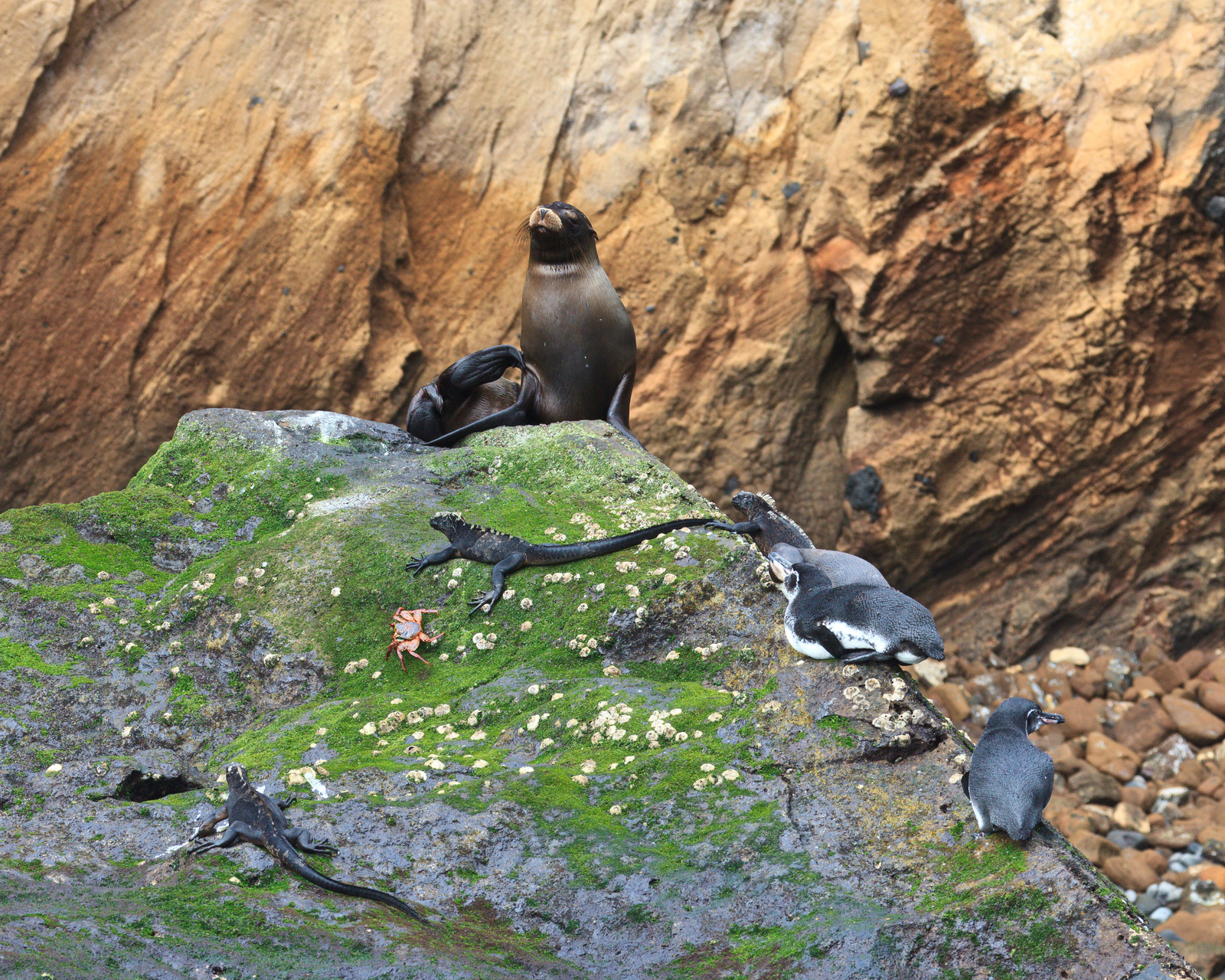
Gateway to the Galapagos Islands
Quito stands as a gateway to the Galapagos Islands. Many start their journey to these islands here, making it a crucial stop. The city offers easy access with flights connecting directly to the Galápagos.
I loved walking through its well-preserved historic center before heading out. The blend of old-world charm and modern convenience adds extra magic to this departure point for an unforgettable adventure.
Medellín, Colombia
Medellín buzzes with energy and creativity. This city, once known for its troubled past, now shines with art, culture, and innovation around every corner.
Transformation into a modern city
I witnessed Medellín evolve into a modern marvel over the years. Once infamous, it's now blooming with art and innovation. Comuna 13 stands out as a vibrant hub of graffiti art, telling stories of resilience.
I strolled through its colorful streets, feeling the mix of history and renewal in every mural. The outdoor escalators there amazed me—they connect neighborhoods once isolated by steep hills.
The city’s transformation didn’t stop at art. Public transport like the metro cable lines reaches remote areas, bridging gaps between communities. Parks and libraries sprouted across Medellín, creating spaces for learning and leisure.
Its temperate weather—earning it the name “City of Eternal Spring”—adds to its charm year-round.
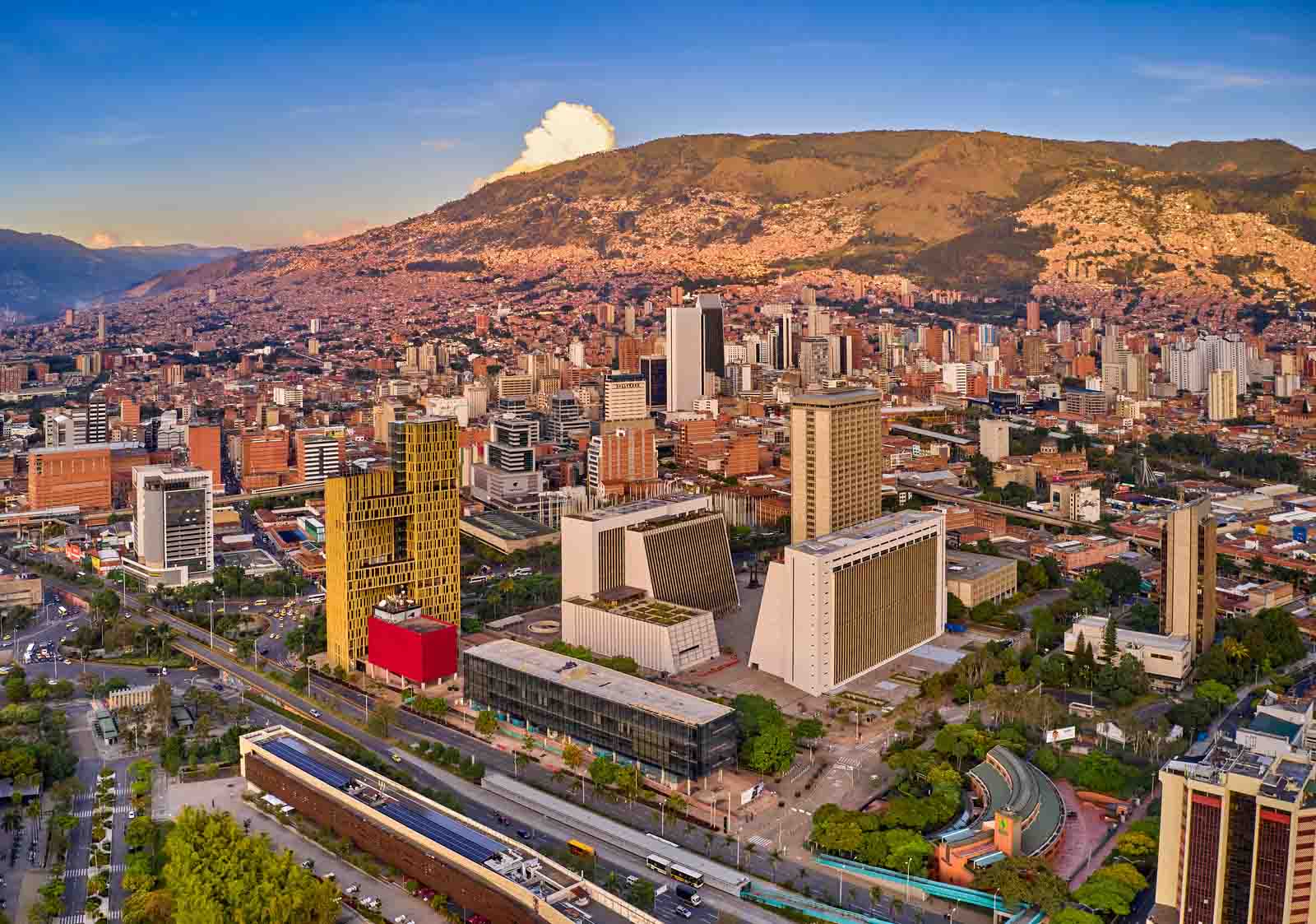
Thriving art and cultural scene
Plaza Botero grabbed my attention with its bold sculptures. Each piece, created by Fernando Botero, adds life to Medellín's streets. The art feels alive, playful, and larger than life—quite literally!
I also discovered the Annual August Flower Festival. It's a burst of colors and smells that wraps the city in joy. Parades filled with music and flower-covered floats fill every corner.
Locals celebrate their culture with pride, making it an unforgettable experience for visitors like me.
Montevideo, Uruguay
Montevideo is a city full of charm, where history meets tranquility. Its scenic beaches and lively festivals create an atmosphere that’s both relaxing and exciting.
Relaxed atmosphere and historic charm
The city feels like a breath of fresh air. Cobblestone streets and colonial buildings take me back in time. Every corner whispers stories from centuries ago, offering an escape from the rush of modern life.
I love the peaceful vibe by the scenic waterfront. Locals gather here for morning walks or evening chats. Festivals add color to life, blending music and tradition seamlessly into the calm surroundings.
Scenic waterfront and cultural festivals
Montevideo offers a calm vibe with its scenic waterfront. I love walking along the Rambla, a coastal path that stretches for 13 miles. Locals gather here to relax, exercise, or sip mate while watching the waves.
The view of the vast Rio de la Plata feels endless at times—calming and grand all in one glance.
The city bursts to life during festivals like Carnival. Drummers fill streets with beats from Afro-Uruguayan Candombe music. Parades feature dancers in vivid costumes under bright lights.
Each event brims with energy and celebrates local culture proudly. It’s hard not to get swept up by it all!
La Paz, Bolivia
La Paz sits high, bold, and breathtaking—literally. This city, cradled by mountains, offers adventures you won’t find anywhere else.
Unique high-altitude city
At 11,913 feet above sea level, Bolivia's capital city of La Paz takes your breath away—literally. It holds the title of the highest administrative capital in the world. The air is thin here, and you’ll feel it immediately upon arrival.
It’s not just about altitude; this place buzzes with energy.
I loved how cable cars crisscrossed the sky, connecting neighborhoods like El Alto to downtown seamlessly. Views of Mount Illimani loom large in every direction—it feels surreal.
From street markets selling alpaca wool to vibrant murals on every corner, this city never stops surprising me with its charm and pace.
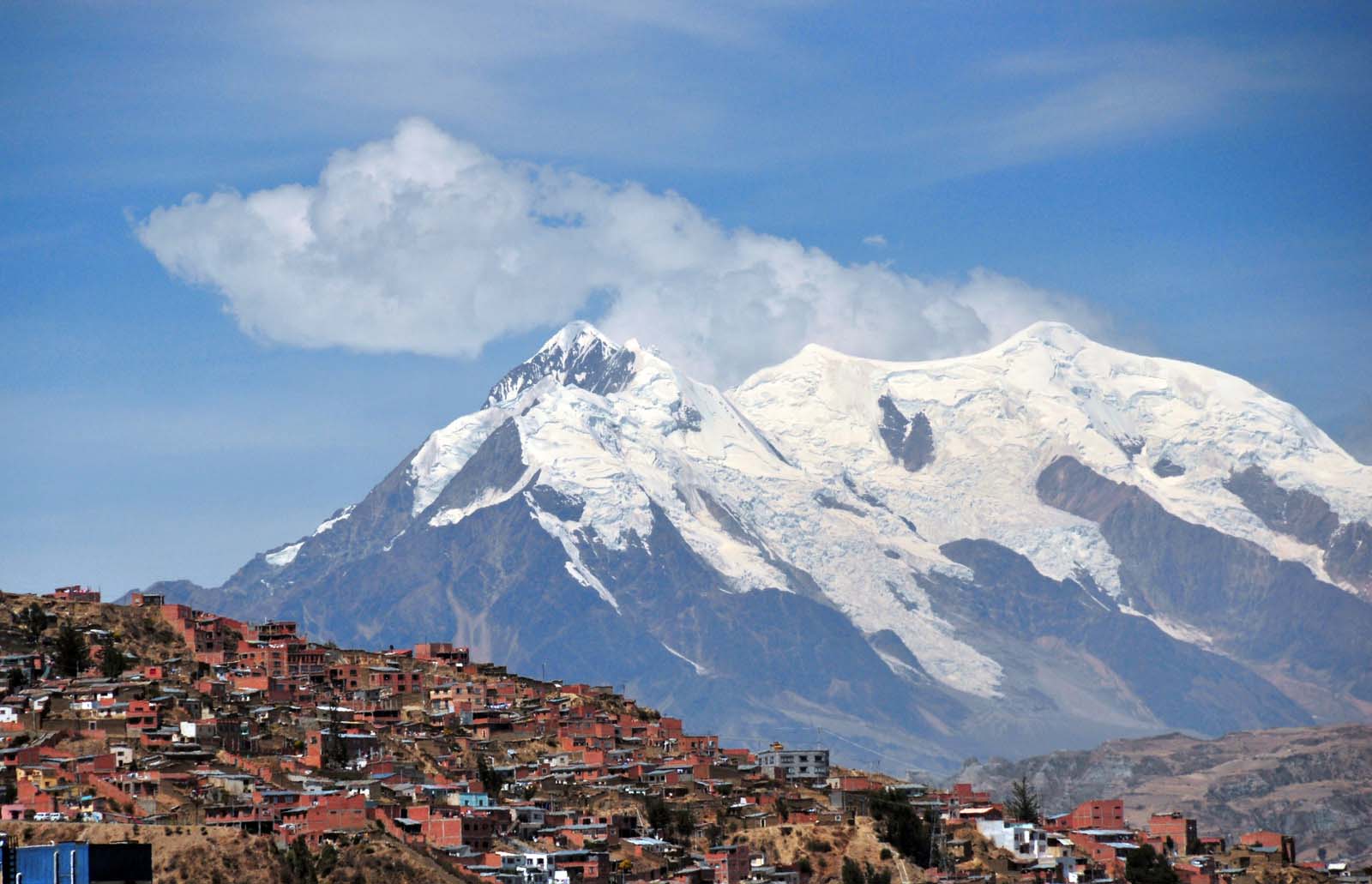
Access to the Uyuni Salt Flats
La Paz opens the door to a surreal wonder. The Uyuni Salt Flats, stretching as far as the eye can see, feel like another planet. Massive and dazzling white during the dry season, they turn into a mirror-like surface when wet.
Flights from La Paz to Uyuni take about an hour, making it quick and simple.
I hopped on one of these flights early in the morning. Once there, local tours whisked me straight onto this natural marvel. The contrast of blue skies against endless salt cracked beneath my feet was astonishing! Jeep tours were everywhere—and yes—most included stops at Incahuasi Island with its towering cacti or areas where hexagonal patterns formed naturally in the salt crust below me!
Iguazú Falls, Argentina/Brazil Border
Iguazú Falls will leave you speechless with its roaring waters and misty spray. The vibrant rainforest surrounding it bursts with life, from colorful toucans to playful monkeys.
Majestic waterfalls and lush rainforest
The Iguazú Falls boast 275 cascades spread across the Argentina-Brazil border. The sound of water crashing is like nature’s own symphony, loud and powerful. Dense rainforest hugs these waterfalls, teeming with vibrant wildlife.
Monkeys swing through trees while toucans add splashes of color overhead.
Mist rises from the plunging waters, creating rainbows that seem almost magical. Towering trees surround it all, forming a green canopy alive with sounds and movement. Walking trails weave through this lush paradise—offering close-up views of both nature's raw power and serene beauty.
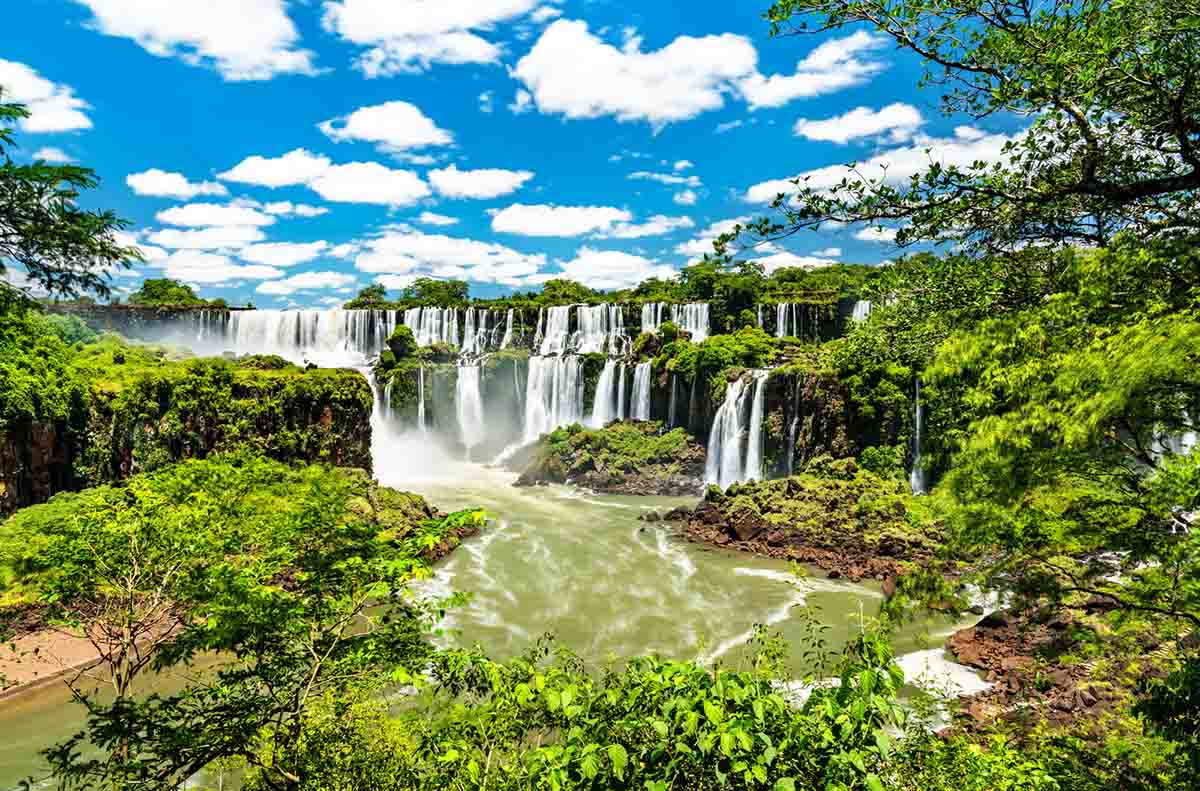
Ushuaia, Argentina
Ushuaia, Argentina, known as the "End of the World," offers stunning landscapes and serves as a gateway to wild Antarctic adventures—ready to explore?
Southernmost city in the world
Nestled in Argentine Patagonia, Ushuaia holds the title of the southernmost city in the world. It sits on the edge of Tierra del Fuego Archipelago, where land meets icy seas. The city's location makes it a gateway to Antarctica and a magnet for adventurers.
Dotted with colorful buildings against snow-capped peaks, it’s breathtaking at every turn.
Harsh winds and dramatic vistas define this place. I’ve stood by its port, watching ships head toward frozen Antarctic landscapes. Nearby spots like Los Glaciares National Park offer glimpses of glaciers and rugged beauty.
Wildlife thrives here too—whale watching presents unforgettable moments as giants move through frigid waters nearby. This end-of-the-world charm is unlike anywhere else!
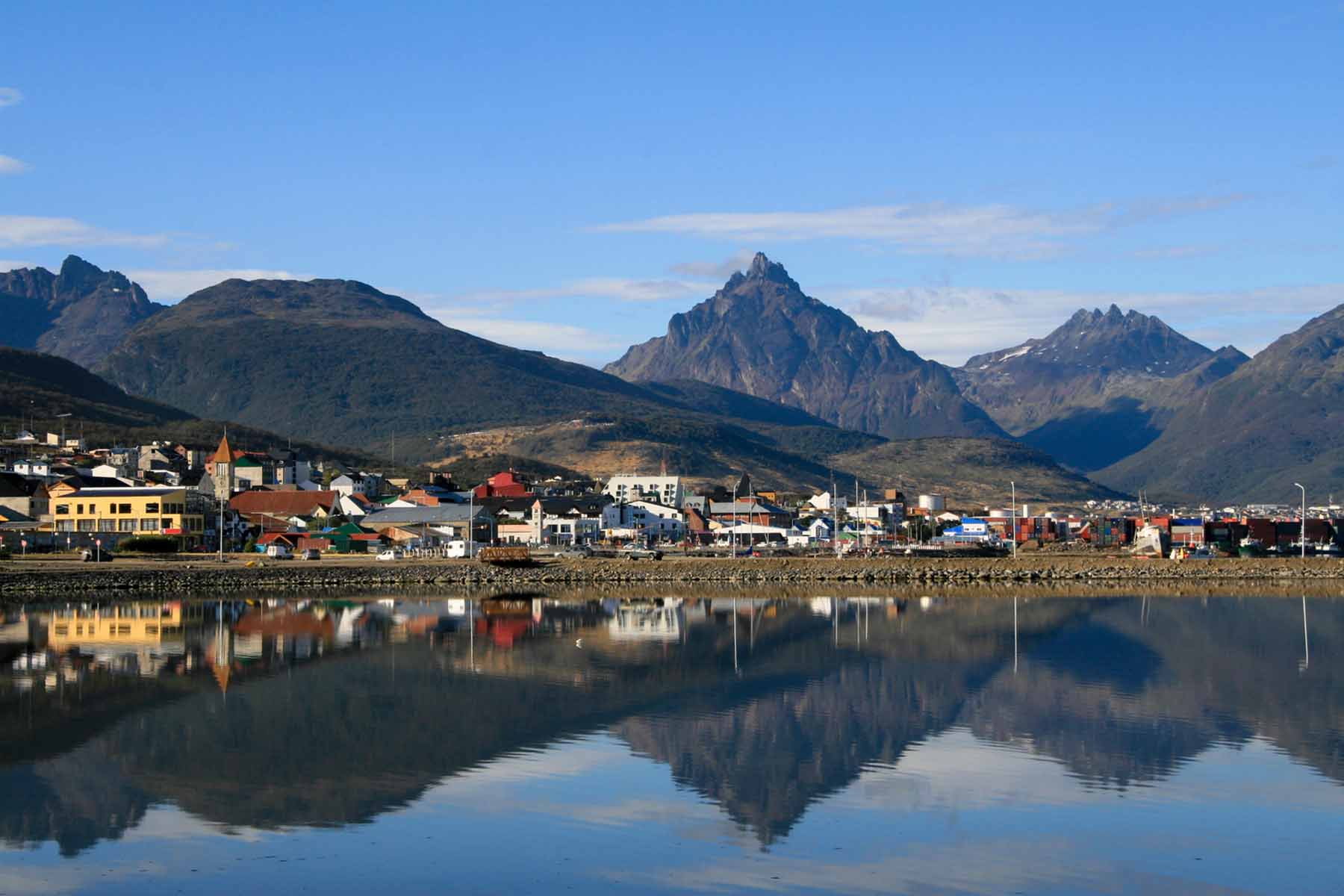
Gateway to Antarctica and stunning landscapes
Ushuaia feels like the edge of the world. This southernmost city in South America sits at the tip of Argentina, offering a gateway to Antarctica. Ships depart from here, crossing icy waters toward the untouched White Continent.
The cold air hits your face as you look out over Beagle Channel, teeming with dolphins and seabirds.
The landscapes around Ushuaia take your breath away. Snow-capped mountains frame endless views of Patagonian wilderness. I once stood by Lapataia Bay in Tierra del Fuego National Park and felt tiny against such beauty.
Glaciers sparkle under sunlight, rivers carve through valleys, and dense forests invite exploration on foot or kayak—pure magic for nature lovers like me!
São Paulo, Brazil
São Paulo buzzes with energy, offering endless art, food, and culture—it's a city that never sleeps.
Dynamic city with diverse cultural offerings
This city bursts with energy, art, and food like no other. Its streets are alive with galleries, theaters, and music festivals that happen year-round. I walked through neighborhoods where murals covered entire buildings.
Each one told a story of its people’s history and dreams.
The cuisine here is unforgettable. From street food to five-star dining, the variety amazed me. Local dishes mixed bold flavors from across Latin cultures. The nightlife sparkled too—clubs playing samba beats next to jazz lounges made it almost impossible not to dance!
Thriving arts and cuisine scenes
Art and food here feel like an adventure for the senses. In São Paulo, Brazil’s largest city, street murals stretch across walls in vibrant colors. The graffiti art at Beco do Batman draws crowds daily, turning alleyways into open-air galleries.
Museums like MASP showcase global masterpieces while supporting local talent. Every corner seems to hum with creativity.
The food scene is equally bold. I tasted feijoada, a hearty black bean stew served on steaming rice that felt like pure comfort on a plate. High-end eateries share space with bustling markets offering pastéis—crispy fried pastries stuffed with meat or cheese.
You can’t walk far without running into a lively café serving pão de queijo (cheese bread). It all blends together beautifully, making culture and cuisine impossible to separate here!
Bogota, Colombia
Bogotá is an eclectic city, offering rich history, striking murals, and cultural gems like Monserrate—you’ll want to dive deeper into this vibrant city.
Rich history and vibrant urban lifestyle
I feel the pulse of history and modernity in Bogotá, Colombia. This city overflows with stories from its colonial past to its buzzing present. La Candelaria dazzles me with narrow streets and colorful historic buildings.
It feels like stepping into a living museum.
The urban lifestyle here is electric. Museums like the Gold Museum house treasures that tell tales of ancient cultures. Street art breathes life into forgotten walls, while markets burst with energy and flavors.
At night, live music spills onto streets as locals dance under city lights.
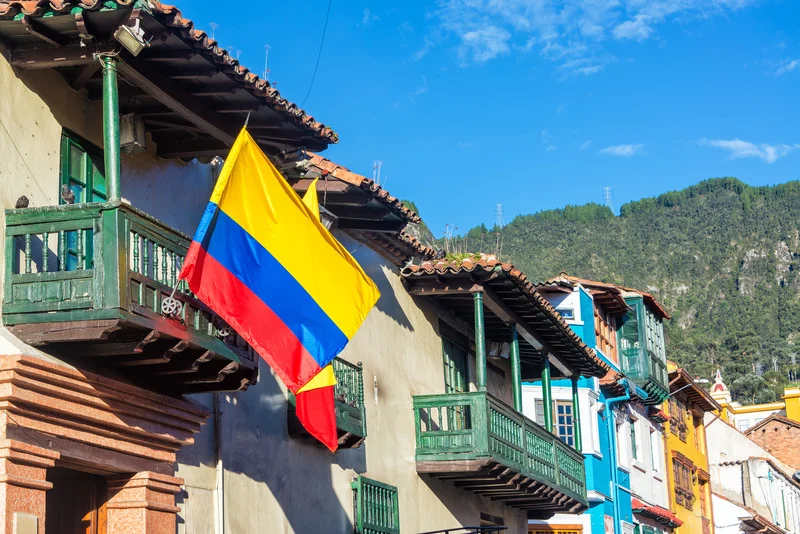
Museums and cultural landmarks
The Gold Museum shines with its vast collection of pre-Columbian treasures. Over 55,000 gold artifacts fill the halls, each telling a different story of ancient South American cultures.
I was in awe of the craftsmanship and the history locked within these pieces.
Monserrate hill offers breathtaking views and a serene atmosphere. Reaching it by cable car felt like an adventure all on its own. The Botero Museum added charm to my visit with its quirky oversized sculptures and paintings—each one brought laughter and wonder.
South America calls to every adventurer. Its cities are alive with culture, history, and beauty. From bustling streets to serene landscapes, there's something for everyone. I’d visit them all if I could—each offers memories you’ll never forget! So pack your bags and start your journey south; the adventure is waiting!
FAQs
-
What are the best cities to visit in South America?
South America is full of incredible destinations. Cuzco, Peru, known for its Inca ruins and historic center, is a must-see. Medellin in Colombia offers vibrant culture and stunning landscapes. Buenos Aires, the capital of Argentina, charms visitors with its tango and lively neighborhoods.
-
Which city in South America is best for New Year’s Eve?
Rio de Janeiro in Brazil takes the crown for New Year’s celebrations. Its famous Copacabana Beach hosts one of the largest parties on Earth, complete with fireworks and music.
-
What are some major cities worth visiting across South America?
Some standout cities include Santiago, the capital city of Chile; Lima in Peru with its delicious Peruvian dishes; Bogotá from Colombia; and Quito’s historic center (Centro Histórico) in Ecuador.
-
Where can I find natural wonders near top cities?
For breathtaking sights near urban areas: visit Torres del Paine National Park close to Puerto Natales in Chilean Patagonia or Iguazu Falls bordering Argentina and Brazil. Don’t miss Mount Corcovado overlooking Rio de Janeiro or Huayna Picchu at Machu Picchu.
-
What is the southernmost capital city in South America?
The southernmost capital city is Montevideo, Uruguay's charming hub by the sea—a peaceful spot compared to bigger capitals like Mexico City or Havana.
-
Are there safe cities to explore while traveling through South America?
Yes! Cities like Cuenca (Ecuador), Mendoza (Argentina), and Valparaiso (Chile) are considered some of the safer options when exploring Central and South America together with places like El Calafate or Rapa Nui in the middle of the Pacific Ocean.


